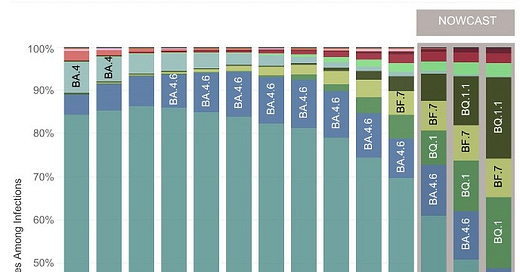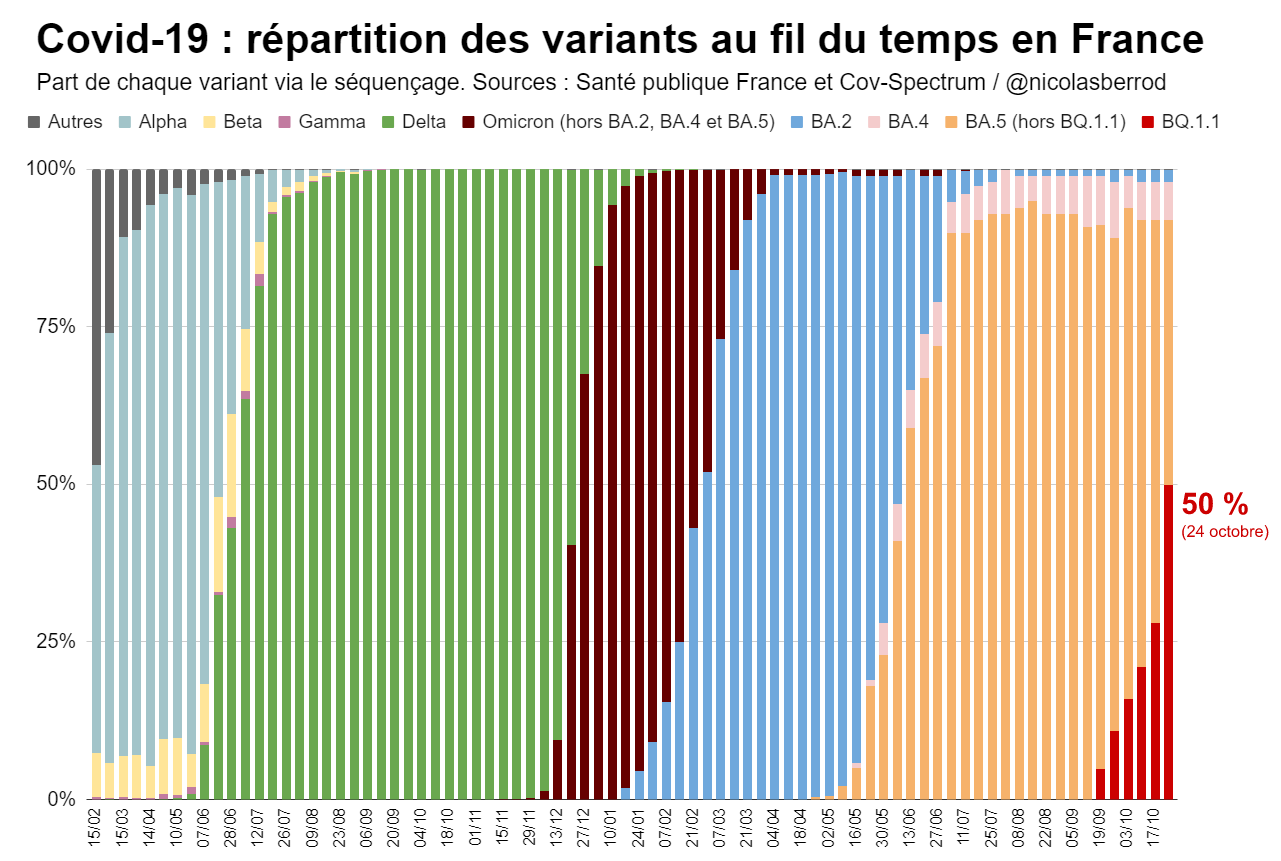Today, the CDC updated the case attribution by variants with BQ.1.1—the main one of concern here—at 19%, and combined with BQ.1 at 35%, not dissimilar to where BA.5 is now (39%) that has faded considerably. While there are other variants at play, none have exhibited as much growth advantage as BQ.1.1 in recent weeks.
The new bivalent booster data
That is of interest in light of the big news today—-the Pfizer/BioNtech BA.5 bivalent booster results (by press release, unlike the other 5 studies below in the past week by preprints). The results, using a live virus assay, were quite concordant with the other 2 live virus assessments, as summarized in this Table—about a 4-fold increase in levels of neutralizing antibody directed to BA.5 compared with the original monovalent booster. As leading virologist/vaccinologist Florian Krammer conveyed, that represents a substantial improvement.
It’s clear the live virus assay is a more accurate assessment, but also note the protection of the bivalent afforded against BQ.1.1 in the Suthar lab report (enhanced vs 2.75.2 as well). Pfizer has not released data yet for the nAb response to BQ.1.1 but the enhanced response is very encouraging in light of the potential BQ.1.1 wave we are moving into in the United States. There are more data that will soon be presented that replicate this advantage of the bivalent BA.5 direct booster that fortunately does better against BQ.1.1 than the original booster.
There’s now a very long list for why to get a booster shot that I’ve reviewed in prior posts, such as for people 50+: the >90% reduction of deaths, >80% reduction of hospitalizations. The added feature is enhanced protection against BQ.1.1 that we’ve just learned about this week. No less the decrease in Long Covid for people who are vaccinated and booster when an infection occurs.
Why can we be optimistic?
I reviewed the situation in France yesterday where BQ.1.1 is dominant (50% level as reached as of the 24 October report), and cases attributable to BQ.1.1 are increasing but hospitalizations are markedly on the descent. Nicolas Berrod reviewed these data in a nice thread today.
The situation in France is quite encouraging, telling us that so far BQ.1.1 is not behaving like Omicron BA.1, BA.2 or BA.5 when the variants became dominant in most countries. We can’t extrapolate too much from one country, but I consider it a sigh of relief. The point is that BQ.1.1x has several more mutations beyond BA.5 that multiple lab assays indicate extreme immune evasion, but not paralleled by signs of severe Covid. We’ll be keeping a close eye on to be sure there’s not a change in this auspicious scenario.
If we can withstand a significant wave from BQ.1.1 it would suggest that the Omicron variant soup is not nearly as big a threat as was envisioned. Why? Because our immunity wall of vaccinations, boosters, and infections may have cumulatively held up to the further evolution of the Omicron sub-subvaraints. That it would take a whole new “Omicron-like” event, a new family of variants, to wreak havoc again. That doesn’t mean we won’t see such a new crop in the future, but at least for the time being I remain optimistic.
On that note, we haven’t seen Covid hospital admissions descent curves and low levels in Europe look like this for a long time, especially in late fall or winter when the spread from indoor gatherings poses more risk (add your seasonality X-factor). Of course these countries, with the exception of France, have not yet had one of the potentially troublesome variants reach dominance. More to keep an eye on.
That’s it for now. Will be back on these Monday for pandemic briefings unless there are any significant developments over the weekend.
Thanks for reading and subscribing.







